K8S ingress 初体验 - ingress-ngnix 的安装与使用
准备环境
先把 google 的vm 跑起来…
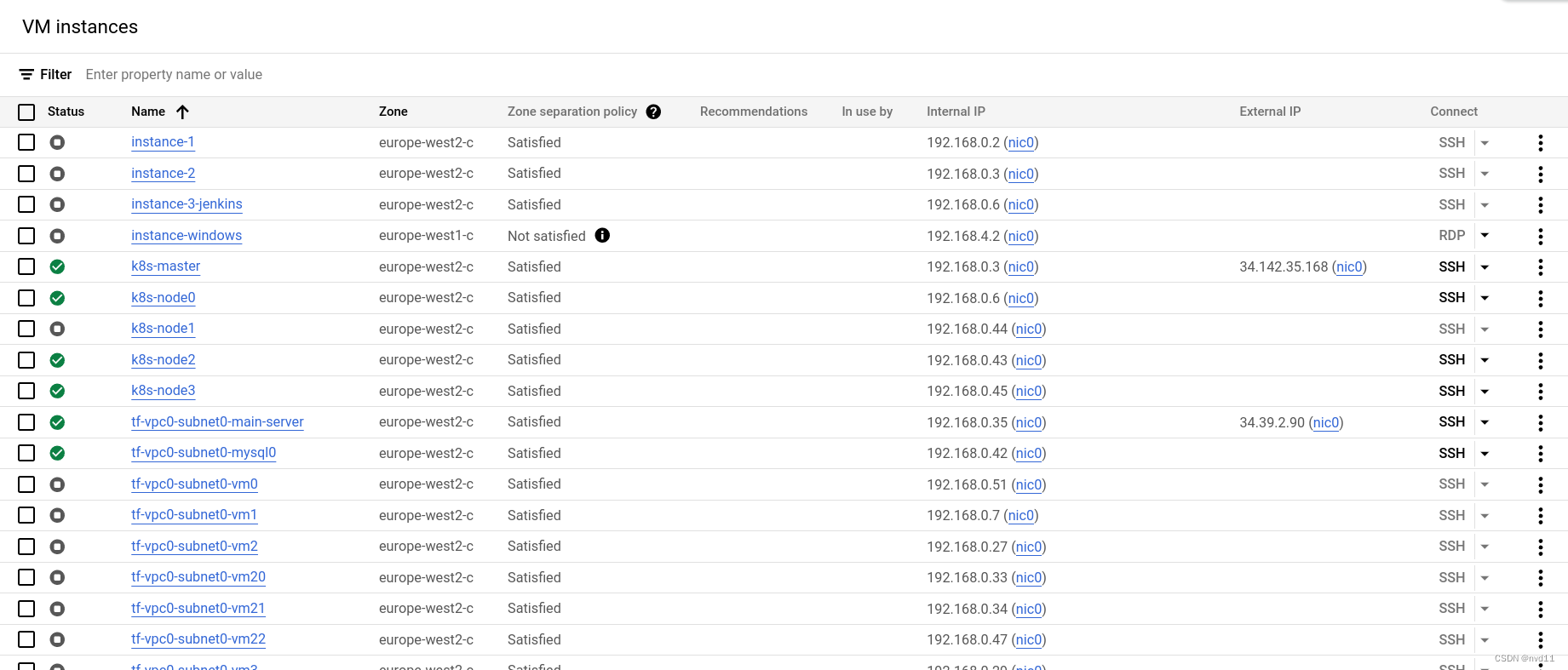
gateman@MoreFine-S500:~/projects/coding/k8s-s/service-case/cloud-user$ kubectl get nodes
NAME STATUS ROLES AGE VERSION
k8s-master Ready control-plane,master 124d v1.23.6
k8s-node0 Ready <none> 124d v1.23.6
k8s-node1 NotReady <none> 124d v1.23.6
k8s-node3 Ready <none> 104d v1.23.6
当前的环境是干净的
gateman@MoreFine-S500:~/projects/coding/k8s-s/service-case/cloud-user$ kubectl get all -o wide
NAME TYPE CLUSTER-IP EXTERNAL-IP PORT(S) AGE SELECTOR
service/kubernetes ClusterIP 10.96.0.1 <none> 443/TCP 81d <none>
准备1个 micro-service 和 1个clusterIP
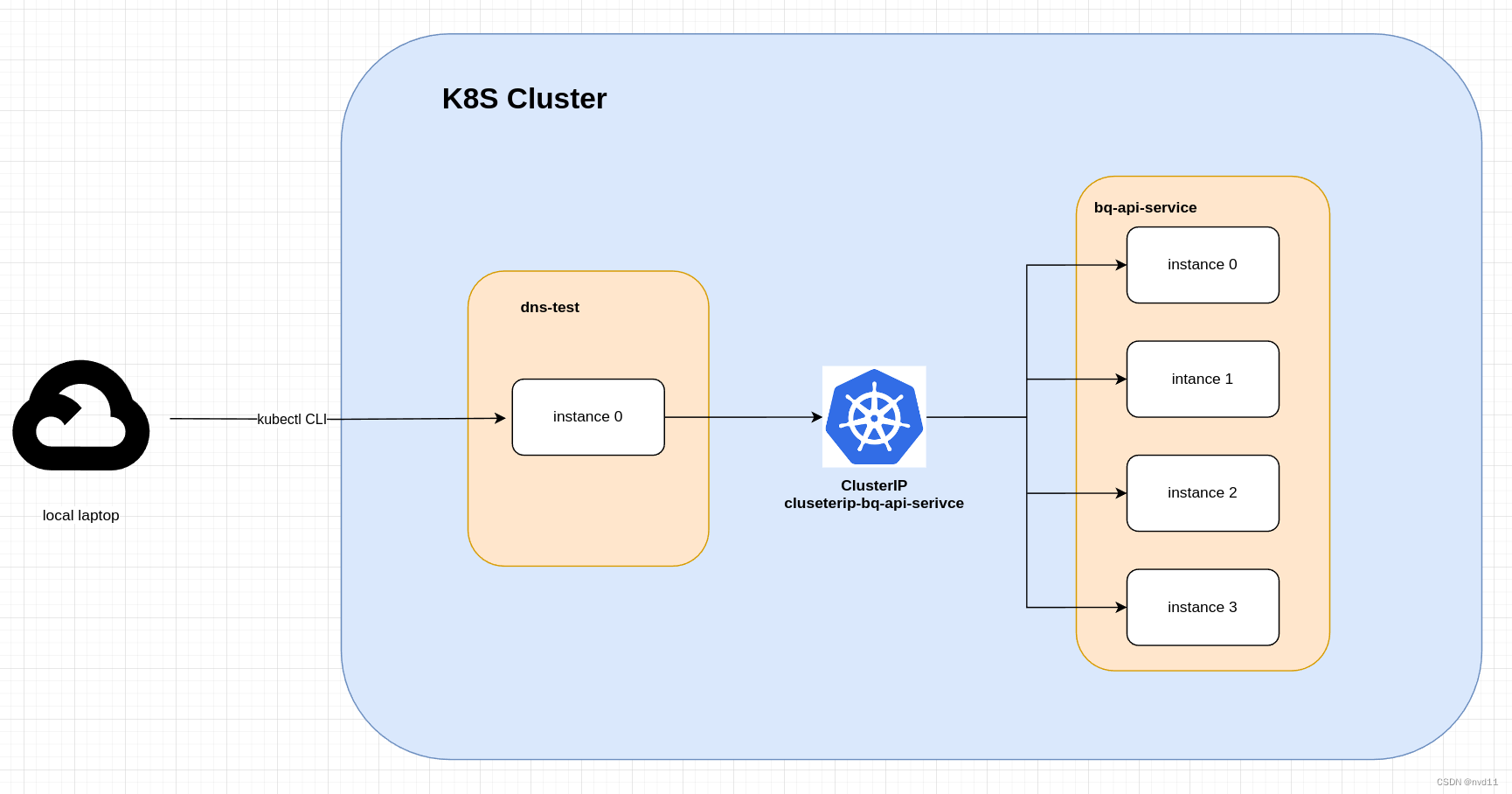
大概框架如上图:
组件
micro service
我会先构建1个 微服务 bq-api-service 并部署到集群, 设成4个pods
clusterIP
我会构建1个 ClusterIP service: clusterip-bq-api-service 作为上面微服务的loadbanlance 和 revserse proxy
测试pod dns-test
因为没有nodePort 和 ingress, 只能用测试POD 去尝试通过 clusterip service 链接 bq-api-serivce
部署bq-api-service
deployment-bq-api-service.yaml
apiVersion: apps/v1
kind: Deployment
metadata:labels: # label of this deploymentapp: bq-api-service # custom definedauthor: nvd11name: deployment-bq-api-service # name of this deploymentnamespace: default
spec:replicas: 4 # desired replica count, Please note that the replica Pods in a Deployment are typically distributed across multiple nodes.revisionHistoryLimit: 10 # The number of old ReplicaSets to retain to allow rollbackselector: # label of the Pod that the Deployment is managing,, it's mandatory, without it , we will get this error # error: error validating data: ValidationError(Deployment.spec.selector): missing required field "matchLabels" in io.k8s.apimachinery.pkg.apis.meta.v1.LabelSelector ..matchLabels:app: bq-api-servicestrategy: # Strategy of upodatetype: RollingUpdate # RollingUpdate or RecreaterollingUpdate:maxSurge: 25% # The maximum number of Pods that can be created over the desired number of Pods during the updatemaxUnavailable: 25% # The maximum number of Pods that can be unavailable during the updatetemplate: # Pod templatemetadata:labels:app: bq-api-service # label of the Pod that the Deployment is managing. must match the selector, otherwise, will get the error Invalid value: map[string]string{"app":"bq-api-xxx"}: `selector` does not match template `labels`spec:containers:- image: europe-west2-docker.pkg.dev/jason-hsbc/my-docker-repo/bq-api-service:1.1.7 # image of the containerimagePullPolicy: IfNotPresentname: bq-api-service-containerenv: # set env varaibles- name: APP_ENVIRONMENTvalue: prodrestartPolicy: Always # Restart policy for all containers within the PodterminationGracePeriodSeconds: 10 # The period of time in seconds given to the Pod to terminate gracefully---
apiVersion: v1
kind: Service
metadata:name: clusterip-bq-api-service
spec:selector:app: bq-api-service # for the pods that have the label app: bq-api-serviceports:- protocol: TCPport: 8080targetPort: 8080type: ClusterIP
执行命令:
gateman@MoreFine-S500:~/projects/coding/k8s-s/ingress/test$ kubectl apply -f bq-api-service.yml
deployment.apps/deployment-bq-api-service created
service/clusterip-bq-api-service unchanged
gateman@MoreFine-S500:~/projects/coding/k8s-s/ingress/test$ kubectl get ep -o wide
NAME ENDPOINTS AGE
clusterip-bq-api-service 10.244.1.70:8080,10.244.1.71:8080,10.244.2.141:8080 + 1 more... 36s
kubernetes 192.168.0.3:6443 83d
gateman@MoreFine-S500:~/projects/coding/k8s-s/ingress/test$ kubectl get pods -o wide
NAME READY STATUS RESTARTS AGE IP NODE NOMINATED NODE READINESS GATES
deployment-bq-api-service-6f6ffc7866-2mn5n 1/1 Running 0 27s 10.244.2.141 k8s-node0 <none> <none>
deployment-bq-api-service-6f6ffc7866-74bcq 1/1 Running 0 27s 10.244.1.70 k8s-node1 <none> <none>
deployment-bq-api-service-6f6ffc7866-l2xzb 1/1 Running 0 27s 10.244.1.71 k8s-node1 <none> <none>
deployment-bq-api-service-6f6ffc7866-lwxt7 1/1 Running 0 27s 10.244.3.82 k8s-node3 <none> <none>
看起来没什么问题
测试cluster ip 的连接
先进入dns-test
gateman@MoreFine-S500:~/projects/coding/k8s-s/ingress/test$ kubectl run dns-test --image=odise/busybox-curl --restart=Never -- /bin/sh -c "while true; do echo hello docker; sleep 1; done"
pod/dns-test created
gateman@MoreFine-S500:~/projects/coding/k8s-s/ingress/test$ kubectl exec -it dns-test -- /bin/sh
/ # 测试调用clusterip service
/ # curl clusterip-bq-api-service:8080/actuator/info
{"app":"Sales API","version":"1.1.7","hostname":"deployment-bq-api-service-6f6ffc7866-2mn5n","description":"This is a simple Spring Boot application to demonstrate the use of BigQuery in GCP."}/ #
/ # curl clusterip-bq-api-service:8080/actuator/info
/ # curl clusterip-bq-api-service:8080/actuator/info
{"app":"Sales API","version":"1.1.7","hostname":"deployment-bq-api-service-6f6ffc7866-l2xzb","description":"This is a simple Spring Boot application to demonstrate the use of BigQuery in GCP."}/ #
看来 reverse proxy 和 loadbalance 都生效~
安装helm
下载:
https://github.com/helm/helm/releases
配置~/.bashrc 就好
export PATH=$PATH:/home/gateman/devtools/helm
测试version
gateman@MoreFine-S500:~/projects/coding/k8s-s/ingress/test$ helm version
version.BuildInfo{Version:"v3.15.2", GitCommit:"1a500d5625419a524fdae4b33de351cc4f58ec35", GitTreeState:"clean", GoVersion:"go1.22.4"}
通过helm 安装 ingress-nginx controller
把 ingress-ngnix 的repo 添加到helm
helm repo add ingress-nginx https://kubernetes.github.io/ingress-nginx
查看repo list
gateman@MoreFine-S500:~/projects/coding/k8s-s/ingress/test$ helm repo list
NAME URL
ingress-nginx https://kubernetes.github.io/ingress-nginx
helm 下载 ingress-nginx package
helm pull <package-name>
helm pull ingress-nginx/ingress-nginx
这时, 会下载1个tgz 文件 ingress-nginx-4.10.1.tgz
解压:
gateman@MoreFine-S500:~/projects/coding/k8s-s/ingress/ingress-nginx/helm/ingress-nginx$ ls -l
total 132
drwxrwxr-x 2 gateman gateman 4096 6月 25 01:26 changelog
-rw-r--r-- 1 gateman gateman 752 4月 26 22:02 Chart.yaml
drwxrwxr-x 2 gateman gateman 4096 6月 25 01:26 ci
-rw-r--r-- 1 gateman gateman 177 4月 26 22:02 OWNERS
-rw-r--r-- 1 gateman gateman 49134 4月 26 22:02 README.md
-rw-r--r-- 1 gateman gateman 11358 4月 26 22:02 README.md.gotmpl
drwxrwxr-x 3 gateman gateman 4096 6月 25 01:26 templates
drwxrwxr-x 2 gateman gateman 4096 6月 25 01:26 tests
-rw-r--r-- 1 gateman gateman 45136 6月 25 02:02 values.yaml
其中values.yaml 就是最终要的配置文件
修改values.yaml
有些教程让我们修改 image repo 的 address 指向阿里云加速, 由于我的server在google cloud 就忽略这一步了。
-
controller.kind -> 由 Deployment 改成 DaemonSet
这样做的优点是
a. 能够保证每个Node节点上都运行一个 ingress-nginx Pod实例,实现全集群访问入口。(实际上我们会用label 只让ingress-nginx 部署在1台node上)
b. 节点故障转移时,新的Node上会自动启动Pod,保证入口始终可用。 -
controller.hostnetwork -> 由false 改成 true
这是DaemonSet的默认网络模式。每个Pod将直接共享Node的网络栈和资源,简化了网络配置。
但同时也会带来上面提到的一些隔离性和安全性问题。 -
controller.dnsPolic-> 由 ClusterFirst 改成 ClusterFirstWithHostNet
ClusterFirst表示使用集群提供的DNS服务进行解析,这也是默认策略。
但是DaemonSet使用hostNetwork模式后,Pod会直接使用宿主机的网络命名空间。
此时设置dnsPolicy=ClusterFirstWithHostNet表示:
首先使用集群的DNS服务来解析域名。
如果集群DNS无法响应,则解析请求会转发到宿主机的DNS服务上寻求响应。
这样可以实现两个目的:
使用集群的DNS服务提高可配置性和维护性。
同时如果集群DNSdown掉,Pod也可以fallback到宿主机本地DNS上,保证关键服务名能被解析到。
这相比直接使用宿主机DNS或仅使用集群DNS更加灵活。
因此对于使用hostNetwork的DaemonSet,dnsPolicy设置为ClusterFirstWithHostNet可以充分利用集群和宿主机的DNS功能,提高服务可用性。 -
controller.service.type -> 由 Loadbalancer 改成 ClusterIP
对于用Helm部署ingress-nginx,使用ClusterIP作为service类型通常是更好的选择。
LoadBalancer类型会要求底层基础设施如云平台自动为ingress分配公网IP地址,但这可能会产生额外的网络开支。
考虑到大多数K8S集群运行在内网环境,使用ClusterIP就可以满足需求。后续还可以配置支持内网访问的解决方案,如NodePort或External IPs。
一般来说,你可以直接在values.yaml里修改service.type为ClusterIP:
在部署 ingress-nginx controller 之前(我们已经把它改成1个DaemonSet), 为它创建1个单独的namespace
kubectl create ns ingress-nginx
我们之后会单独地把 ingress-ingress 部署在这个 同名字的namespace 上面。
问题来了, 在命名空间A的 ingress controller 可以用与命名空间B的ingress 实例吗?
答案是yes:
关于Ingress controller namespace与Ingress资源namespace的关系:1. Ingress controller一般会部署在单独的namespace下,比如ingress-namespace。
2. Ingress资源可以定义在任何namespace中。
3. Kubernetes会检测所有namespace下是否有Ingress Controller的服务运行。如果有,则Ingress资源对应的namespace会自动重定向到Ingress controller所在的namespace。Ingress controller通过监视Apiserver,可以查询到集群内所有namespace下定义的Ingress资源。也就是说:1. Ingress controller和Ingress资源可以部署在不同的namespace。
2. Kubernetes会自动帮助Ingress资源找到部署在哪个namespace的Ingress controller。
3. Ingress controller 通过Apiserver可以查到所有namespace下的Ingress定义。
为所在node添加label
ingress-controller 作为1个类网关程序, 理论上只在其中1个node 部署就够了
由于我们修改了value.yaml, 把这个controll的类型改成了DaemonSet 所以, 理论上每个node 都会部署1个pod, 是有资源浪费的。
而实际上, value.yaml 有定义了1个规则- node selector, 只有具有某个label ingress=true 的node 才会部署
node selector 的定义:
controller.nodeSelector:
nodeSelector: # nodeSelector of DaemonSet we updatedkubernetes.io/os: linuxingress: "true" # use String instead of bool
所以我们只需要为1台node 添加这个label 就好
但是, 如果我们只给master node添加label是不work的, 因为master node 配置了污点, 会bypass 大部分 deployment/DaemonSet 的部署
这次我们只给k8s-node0 这个node 添加label
gateman@MoreFine-S500:~/projects/coding/k8s-s/ingress/ingress-nginx/helm/ingress-nginx$ kubectl label no k8s-node0 ingress=true
node/k8s-node0 labeled
查看label
gateman@MoreFine-S500:~/tmp/ingress-nginx$ kubectl get nodes --show-labels=true
NAME STATUS ROLES AGE VERSION LABELS
k8s-master Ready control-plane,master 128d v1.23.6 beta.kubernetes.io/arch=amd64,beta.kubernetes.io/os=linux,ingress=true,kubernetes.io/arch=amd64,kubernetes.io/hostname=k8s-master,kubernetes.io/os=linux,node-role.kubernetes.io/control-plane=,node-role.kubernetes.io/master=,node.kubernetes.io/exclude-from-external-load-balancers=
k8s-node0 Ready <none> 128d v1.23.6 beta.kubernetes.io/arch=amd64,beta.kubernetes.io/os=linux,ingress=true,kubernetes.io/arch=amd64,kubernetes.io/hostname=k8s-node0,kubernetes.io/os=linux
k8s-node1 Ready <none> 128d v1.23.6 beta.kubernetes.io/arch=amd64,beta.kubernetes.io/os=linux,kubernetes.io/arch=amd64,kubernetes.io/hostname=k8s-node1,kubernetes.io/os=linux
k8s-node3 Ready <none> 108d v1.23.6 beta.kubernetes.io/arch=amd64,beta.kubernetes.io/os=linux,kubernetes.io/arch=amd64,kubernetes.io/hostname=k8s-node3,kubernetes.io/os=linux部署ingress-inginx controller
进入之前解压的folder (value.yaml)的上一层
执行
helm install nginx
gateman@MoreFine-S500:~/projects/coding/k8s-s/ingress/ingress-nginx/helm/ingress-nginx$ helm install ingress-nginx -n ingress-nginx .
NAME: ingress-nginx
LAST DEPLOYED: Tue Jun 25 02:16:57 2024
NAMESPACE: ingress-nginx
STATUS: deployed
REVISION: 1
TEST SUITE: None
NOTES:
The ingress-nginx controller has been installed.
检查pods
gateman@MoreFine-S500:~/tmp/ingress-nginx$ kubectl get po -o wide -n ingress-nginx
NAME READY STATUS RESTARTS AGE IP NODE NOMINATED NODE READINESS GATES
ingress-nginx-controller-72dmb 1/1 Running 3 (2d18h ago) 6d20h 192.168.0.6 k8s-node0 <none> <none>
可见这个ingress-controller 已经运行在了 k8s-node0
创建1个ingress 资源
创建yaml
yaml file:
apiVersion: networking.k8s.io/v1
kind: Ingress # it is a resource name of k8s
metadata:name: ingress-nginx-instance-0 # the ingress namenamespace: default # the namespace of the ingressannotations: # Ingress frequently uses annotations to configure some options depending on the Ingress controller, # an example of which is the rewrite-target annotation. Different Ingress controllers support different annotations.kubernetes.io/ingress.class: nginx # it will search the ingress controller with the same class
spec: # spec means specification, it is the main part of the Ingress resourcerules: # rules is a list of host rules used to configure the Ingress controller- host: "www.example.com" # host is the domain name of the Ingress controller, it could be a wildcard, but must start with a wildcard * , e.g. *.example.comhttp: # http is a list of http rules used to configure the Ingress controller for HTTP traffic, the port is 80, cannot be changed for ingress-nginxpaths: # Equivalent to the location setting of nginx, cuold be multiple- pathType: Prefix # supports Prefix and Extract and ImplementationSpecificbackend: # backend is the service to forward the request toservice: # Usually the cluster-ipname: clusterip-bq-api-serviceport: number: 8080path: /actuator # Equivalent to the location setting of nginx
上面是1个最简单的ingress resource, 基本上我每一行都加上了注解
值得注意的有如下几点
- 既然有metadata, 为什么还需要annotations?
的确两者都可以用来存储一些元数据,但是metadata是k8s的内建字段,而annotations是用户自定义的字段, 而在ingress 中,annotation 的配置是非常重要的,因为不同的ingress controller 支持的annotation是不一样的,所以annotations是必须的 - pathType: 这里我只用了Prefix, prefix 也是sprint cloud gateway 常用的类型, 但是在ingress-nginx 中更常用的是ImplementationSpecific, 后面会表述原因
- 这个配置的规则是 ingress:80 -> clusterip:8080 其中ingress-nginx 的端口是不支持修改的, 要么是http 80, 要么是tls 443
执行创建命令
$ kubectl delete ingress ingress-nginx-instance-0
ingress.networking.k8s.io "ingress-nginx-instance-0" deleted
查看ingress 信息和测试
首先 浏览一下这个创建号的ingress
gateman@MoreFine-S500:~/projects/coding/k8s-s/ingress/ingress-nginx/ingress-resource$ kubectl get ingress -o wide
NAME CLASS HOSTS ADDRESS PORTS AGE
ingress-nginx-instance-0 <none> www.example.com 10.107.95.68 80 53m
gateman@MoreFine-S500:~/projects/coding/k8s-s/ingress/ingress-nginx/ingress-resource$ kubectl describe ingress ingress-nginx-instance-0
Name: ingress-nginx-instance-0
Labels: <none>
Namespace: default
Address: 10.107.95.68
Ingress Class: <none>
Default backend: <default>
Rules:Host Path Backends---- ---- --------www.example.com /actuator clusterip-bq-api-service:8080 (10.244.2.146:8080,10.244.2.147:8080,10.244.3.86:8080 + 1 more...)
Annotations: kubernetes.io/ingress.class: nginx
Events:Type Reason Age From Message---- ------ ---- ---- -------Normal Sync 52m (x2 over 53m) nginx-ingress-controller Scheduled for sync
可以见到这个ingress 被分配了容器内ip
我们试下是否能在容器内调用
gateman@MoreFine-S500:~/projects/coding/k8s-s/ingress/ingress-nginx/ingress-resource$ kubectl exec -it dns-test -- /bin/sh
/ # ping 10.107.95.68
PING 10.107.95.68 (10.107.95.68): 56 data bytes
^C
--- 10.107.95.68 ping statistics ---
11 packets transmitted, 0 packets received, 100% packet loss
/ # curl 10.107.95.68/actuator/info
<html>
<head><title>404 Not Found</title></head>
<body>
<center><h1>404 Not Found</h1></center>
<hr><center>nginx</center>
</body>
</html>
/ #
这个ip 在无法在容器内ping 通
但是能通过curl 调用, 因为nginx 规则, 必须用指定域名 www.example.com (见上面的yaml 配置)
无法调用成功
我们在容器内 set 一下hostname:
10.107.95.68 www.example.com
调用成功:
/ # nslookup www.example.com
Server: 10.96.0.10
Address 1: 10.96.0.10 kube-dns.kube-system.svc.cluster.localName: www.example.com
Address 1: 10.107.95.68 www.example.com
/ # curl www.example.com/actuator/info
{"app":"Sales API","version":"1.1.7","hostname":"deployment-bq-api-service-6f6ffc7866-g4854","description":"This is a simple Spring Boot application to demonstrate the use of BigQuery in GCP."}
在集群外的server call ingress
上面我们 edit 容器内的/etc/hosts match了 10.107.95.68 www.example.com
但是这个ip 在容器外的server 特别是集群内的server 是无法访问的。
那么集群外的server 如何访问ingress呢
这时我们登陆 ingress-nginx controller 所create的pod, 所在的node
gateman@MoreFine-S500:~/projects/coding/k8s-s/ingress/ingress-nginx/ingress-resource$ kubectl get pods --all-namespaces -o wide | grep ingress
ingress-nginx ingress-nginx-controller-72dmb 1/1 Running 4 (8d ago) 15d 192.168.0.6 k8s-node0 <none> <none>
查看k8s-node0 的端口占用
gateman@k8s-node0:~$ sudo ss -tunlp | grep nginx
tcp LISTEN 0 4096 0.0.0.0:443 0.0.0.0:* users:(("nginx",pid=67247,fd=23),("nginx",pid=67246,fd=23),("nginx",pid=67245,fd=23),("nginx",pid=67244,fd=23),("nginx",pid=3823,fd=23))
tcp LISTEN 0 4096 0.0.0.0:443 0.0.0.0:* users:(("nginx",pid=67247,fd=22),("nginx",pid=67246,fd=22),("nginx",pid=67245,fd=22),("nginx",pid=67244,fd=22),("nginx",pid=3823,fd=22))
tcp LISTEN 0 4096 0.0.0.0:443 0.0.0.0:* users:(("nginx",pid=67247,fd=21),("nginx",pid=67246,fd=21),("nginx",pid=67245,fd=21),("nginx",pid=67244,fd=21),("nginx",pid=3823,fd=21))
tcp LISTEN 0 4096 0.0.0.0:443 0.0.0.0:* users:(("nginx",pid=67247,fd=9),("nginx",pid=67246,fd=9),("nginx",pid=67245,fd=9),("nginx",pid=67244,fd=9),("nginx",pid=3823,fd=9))
tcp LISTEN 0 4096 127.0.0.1:10245 0.0.0.0:* users:(("nginx-ingress-c",pid=2207,fd=7))
tcp LISTEN 0 511 127.0.0.1:10246 0.0.0.0:* users:(("nginx",pid=67247,fd=13),("nginx",pid=67246,fd=13),("nginx",pid=67245,fd=13),("nginx",pid=67244,fd=13),("nginx",pid=3823,fd=13))
tcp LISTEN 0 511 127.0.0.1:10247 0.0.0.0:* users:(("nginx",pid=67247,fd=14),("nginx",pid=67246,fd=14),("nginx",pid=67245,fd=14),("nginx",pid=67244,fd=14),("nginx",pid=3823,fd=14))
tcp LISTEN 0 4096 0.0.0.0:80 0.0.0.0:* users:(("nginx",pid=67247,fd=17),("nginx",pid=67246,fd=17),("nginx",pid=67245,fd=17),("nginx",pid=67244,fd=17),("nginx",pid=3823,fd=17))
tcp LISTEN 0 4096 0.0.0.0:80 0.0.0.0:* users:(("nginx",pid=67247,fd=16),("nginx",pid=67246,fd=16),("nginx",pid=67245,fd=16),("nginx",pid=67244,fd=16),("nginx",pid=3823,fd=16))
tcp LISTEN 0 4096 0.0.0.0:80 0.0.0.0:* users:(("nginx",pid=67247,fd=15),("nginx",pid=67246,fd=15),("nginx",pid=67245,fd=15),("nginx",pid=67244,fd=15),("nginx",pid=3823,fd=15))
tcp LISTEN 0 4096 0.0.0.0:80 0.0.0.0:* users:(("nginx",pid=67247,fd=7),("nginx",pid=67246,fd=7),("nginx",pid=67245,fd=7),("nginx",pid=67244,fd=7),("nginx",pid=3823,fd=7))
tcp LISTEN 0 4096 0.0.0.0:8181 0.0.0.0:* users:(("nginx",pid=67247,fd=29),("nginx",pid=67246,fd=29),("nginx",pid=67245,fd=29),("nginx",pid=67244,fd=29),("nginx",pid=3823,fd=29))
tcp LISTEN 0 4096 0.0.0.0:8181 0.0.0.0:* users:(("nginx",pid=67247,fd=28),("nginx",pid=67246,fd=28),("nginx",pid=67245,fd=28),("nginx",pid=67244,fd=28),("nginx",pid=3823,fd=28))
tcp LISTEN 0 4096 0.0.0.0:8181 0.0.0.0:* users:(("nginx",pid=67247,fd=27),("nginx",pid=67246,fd=27),("nginx",pid=67245,fd=27),("nginx",pid=67244,fd=27),("nginx",pid=3823,fd=27))
tcp LISTEN 0 4096 0.0.0.0:8181 0.0.0.0:* users:(("nginx",pid=67247,fd=11),("nginx",pid=67246,fd=11),("nginx",pid=67245,fd=11),("nginx",pid=67244,fd=11),("nginx",pid=3823,fd=11))
tcp LISTEN 0 4096 *:8443 *:* users:(("nginx-ingress-c",pid=2207,fd=12))
tcp LISTEN 0 4096 [::]:443 [::]:* users:(("nginx",pid=67247,fd=10),("nginx",pid=67246,fd=10),("nginx",pid=67245,fd=10),("nginx",pid=67244,fd=10),("nginx",pid=3823,fd=10))
tcp LISTEN 0 4096 [::]:443 [::]:* users:(("nginx",pid=67247,fd=24),("nginx",pid=67246,fd=24),("nginx",pid=67245,fd=24),("nginx",pid=67244,fd=24),("nginx",pid=3823,fd=24))
tcp LISTEN 0 4096 [::]:443 [::]:* users:(("nginx",pid=67247,fd=25),("nginx",pid=67246,fd=25),("nginx",pid=67245,fd=25),("nginx",pid=67244,fd=25),("nginx",pid=3823,fd=25))
tcp LISTEN 0 4096 [::]:443 [::]:* users:(("nginx",pid=67247,fd=26),("nginx",pid=67246,fd=26),("nginx",pid=67245,fd=26),("nginx",pid=67244,fd=26),("nginx",pid=3823,fd=26))
tcp LISTEN 0 4096 *:10254 *:* users:(("nginx-ingress-c",pid=2207,fd=11))
tcp LISTEN 0 4096 [::]:80 [::]:* users:(("nginx",pid=67247,fd=8),("nginx",pid=67246,fd=8),("nginx",pid=67245,fd=8),("nginx",pid=67244,fd=8),("nginx",pid=3823,fd=8))
tcp LISTEN 0 4096 [::]:80 [::]:* users:(("nginx",pid=67247,fd=18),("nginx",pid=67246,fd=18),("nginx",pid=67245,fd=18),("nginx",pid=67244,fd=18),("nginx",pid=3823,fd=18))
tcp LISTEN 0 4096 [::]:80 [::]:* users:(("nginx",pid=67247,fd=19),("nginx",pid=67246,fd=19),("nginx",pid=67245,fd=19),("nginx",pid=67244,fd=19),("nginx",pid=3823,fd=19))
tcp LISTEN 0 4096 [::]:80 [::]:* users:(("nginx",pid=67247,fd=20),("nginx",pid=67246,fd=20),("nginx",pid=67245,fd=20),("nginx",pid=67244,fd=20),("nginx",pid=3823,fd=20))
tcp LISTEN 0 4096 [::]:8181 [::]:* users:(("nginx",pid=67247,fd=12),("nginx",pid=67246,fd=12),("nginx",pid=67245,fd=12),("nginx",pid=67244,fd=12),("nginx",pid=3823,fd=12))
tcp LISTEN 0 4096 [::]:8181 [::]:* users:(("nginx",pid=67247,fd=30),("nginx",pid=67246,fd=30),("nginx",pid=67245,fd=30),("nginx",pid=67244,fd=30),("nginx",pid=3823,fd=30))
tcp LISTEN 0 4096 [::]:8181 [::]:* users:(("nginx",pid=67247,fd=31),("nginx",pid=67246,fd=31),("nginx",pid=67245,fd=31),("nginx",pid=67244,fd=31),("nginx",pid=3823,fd=31))
tcp LISTEN 0 4096 [::]:8181 [::]:* users:(("nginx",pid=67247,fd=32),("nginx",pid=67246,fd=32),("nginx",pid=67245,fd=32),("nginx",pid=67244,fd=32),("nginx",pid=3823,fd=32))
可以见到已经有nginx 的worker 在监听80端口了
实际上通过 访问k8s-node0 80端口 来放问ingress
登陆一台集群外主机 (仍在同1个vpc-network)
gcloud compute ssh tf-vpc0-subnet0-main-server
edit /etc/host
gateman@tf-vpc0-subnet0-main-server:~$ sudo vi /etc/hosts
gateman@tf-vpc0-subnet0-main-server:~$ cat /etc/hosts
127.0.0.1 localhost
::1 localhost ip6-localhost ip6-loopback
ff02::1 ip6-allnodes
ff02::2 ip6-allrouters192.168.1.5 tf-vpc0-subnet1-vm1
192.168.0.42 tf-vpc0-subnet0-mysql0
192.168.0.3 k8s-master
192.168.0.35 tf-vpc0-subnet0-main-server.c.jason-hsbc.internal tf-vpc0-subnet0-main-server # Added by Google
169.254.169.254 metadata.google.internal # Added by Google
192.168.0.6 www.example.com
gateman@tf-vpc0-subnet0-main-server:~$
其中192.168.0.6 就是k8s-node0的ip
测试
用ip 和 k8s-node0 这个域名都是无法call通的
gateman@tf-vpc0-subnet0-main-server:~$ curl 192.168.0.6/actuator/info
<html>
<head><title>404 Not Found</title></head>
<body>
<center><h1>404 Not Found</h1></center>
<hr><center>nginx</center>
</body>
</html>
gateman@tf-vpc0-subnet0-main-server:~$ curl k8s-node0/actuator/info
<html>
<head><title>404 Not Found</title></head>
<body>
<center><h1>404 Not Found</h1></center>
<hr><center>nginx</center>
</body>
但是用www.example.com 就可以了:
gateman@tf-vpc0-subnet0-main-server:~$ curl www.example.com/actuator/info
{"app":"Sales API","version":"1.1.7","hostname":"deployment-bq-api-service-6f6ffc7866-g4854","description":"This is a simple Spring Boot application to demonstrate the use of BigQuery in GCP."}
框架图
到这里我们已经基本实现了ingress 的作用, 让1台k8s 内网外的server 访问k8s 内的pods 部署的api
注意k8s 外部网络主机访问ingress 并不是直接访问ingress 而是 访问Ingress controller 所在node 的ip

path 重定向
需求
假设上面的例子 1个ingress 只对1个service 上面的写法在此情况下是无问题的。
但是假如1个ingress 对两个service 就不行了
假如 service a 和 service b 都有两个相同的path 的api
e.g. 都有 /actuator/info
我希望
ingress 的 /service-a/actuator --> service a 的/actuator** , /service-b/actuator --> service b 的/actuator**
先试下简单粗暴的写法:
apiVersion: networking.k8s.io/v1
kind: Ingress # it is a resource name of k8s
metadata:name: ingress-nginx-instance-0 # the ingress namenamespace: default # the namespace of the ingressannotations: # Ingress frequently uses annotations to configure some options depending on the Ingress controller, # an example of which is the rewrite-target annotation. Different Ingress controllers support different annotations.kubernetes.io/ingress.class: nginx # it will search the ingress controller with the same class
spec: # spec means specification, it is the main part of the Ingress resourcerules: # rules is a list of host rules used to configure the Ingress controller- host: "www.example.com" # host is the domain name of the Ingress controller, it could be a wildcard, but must start with a wildcard * , e.g. *.example.comhttp: # http is a list of http rules used to configure the Ingress controller for HTTP traffic, the port is 80, cannot be changed for ingress-nginxpaths: # Equivalent to the location setting of nginx, cuold be multiple- pathType: Prefix # supports Prefix and Extract and ImplementationSpecificbackend: # backend is the service to forward the request toservice: # Usually the cluster-ipname: clusterip-bq-api-serviceport: number: 8080path: /bq-api-service/actuator # change here
测试, 是不行的, 因为 bq-api-service 根本没有/bq-api-service 开头的api
gateman@tf-vpc0-subnet0-main-server:~$ curl www.example.com/actuator/info
<html>
<head><title>404 Not Found</title></head>
<body>
<center><h1>404 Not Found</h1></center>
<hr><center>nginx</center>
</body>
</html>
gateman@tf-vpc0-subnet0-main-server:~$ curl www.example.com/bq-api-service/actuator/info
{"timestamp":"2024-07-11T16:57:59.849+00:00","status":404,"error":"Not Found","message":"No message available","path":"/bq-api-service/actuator/info"}
nginx.ingress.kubernetes.io/rewrite-target
查阅官方文档
我们可以通过1个 annotation 实现这个功能
改写成
apiVersion: networking.k8s.io/v1
kind: Ingress # it is a resource name of k8s
metadata:name: ingress-nginx-instance-0 # the ingress namenamespace: default # the namespace of the ingressannotations: # Ingress frequently uses annotations to configure some options depending on the Ingress controller, # an example of which is the rewrite-target annotation. Different Ingress controllers support different annotations.kubernetes.io/ingress.class: nginx # it will search the ingress controller with the same classnginx.ingress.kubernetes.io/rewrite-target: /$2 # rewrite the url let ingress/bq-api-service/xxx point to backend:8080/xxx
spec: # spec means specification, it is the main part of the Ingress resourcerules: # rules is a list of host rules used to configure the Ingress controller- host: "www.example.com" # host is the domain name of the Ingress controller, it could be a wildcard, but must start with a wildcard * , e.g. *.example.comhttp: # http is a list of http rules used to configure the Ingress controller for HTTP traffic, the port is 80, cannot be changed for ingress-nginxpaths: # Equivalent to the location setting of nginx, cuold be multiple- pathType: ImplementationSpecific # supports Prefix and Extract and ImplementationSpecific# if we need to use rewrite-target, we must use ImplementationSpecific, because ony this could support regular expression pathbackend: # backend is the service to forward the request toservice: # Usually the cluster-ipname: clusterip-bq-api-serviceport: number: 8080path: /bq-api-service(/|$)(.*) # Equivalent to the location setting of nginx# means if the url is /bq-api-service/xxx, it will forward to backend:8080/xxx# (/|$) means / or line end# /bq-api-service(/|$)(.*) with /$2 , here $2 means the second Capture groups, the (.*) part# we could also use /bq-api-service(.*) with $1, please note here $1 do not have / before it
请注意我改了3个地方
- pathType 由 prefix -> ImplementationSpecific , 因为只有ImplementationSpecific 支持正则表达式 的path
- 添加 annotation nginx.ingress.kubernetes.io/rewrite-target: /$2 这里表示 正则表达式path 的第2 捕获组
- path: /bq-api-service(/|$)(.*) 这里改成了正则表达式
这里再详细解释正则表达式的意思
(/|$) 表示 bq-api-service 后面可以跟着/ 或者 行结束符号, 注意这里的$ 并不是$字符, 而是表示行结束了 这里是第1个捕获组
(.*) 表示任何字符 第2个捕获组
当 传入/bq-api-service 时是可以匹配的 因为后面跟着行结束符号, 这时(.*)就什么都不是了 /$2 就是/
当掺入/bq-api-service/aaa/bb/ccc时 $2 就是aaa/bb/ccc 而/$2 就是 /aaa/bbb/cc
实际上 我们用 /bq-api-service(.*) 和 $1 (注意并不是/$1) 亲测效果是一样的, 由于官方推荐的是上面的写法, 我们就随官方文档
测试
测试通过
gateman@tf-vpc0-subnet0-main-server:~$ curl www.example.com/bq-api-service/actuator/info
{"app":"Sales API","version":"1.1.7","hostname":"deployment-bq-api-service-6f6ffc7866-lwxt7","description":"This is a simple Spring Boot application to demonstrate the use of BigQuery in GCP."}
gateman@tf-vpc0-subnet0-main-server:~$ curl www.example.com/bq-api-service/actuator/info
{"app":"Sales API","version":"1.1.7","hostname":"deployment-bq-api-service-6f6ffc7866-mxwcq","description":"This is a simple Spring Boot application to demonstrate the use of BigQuery in GCP."}
在公网访问ingress
思路
由于我的ingress 所在的k8s-node0 是没有公网ip的 所以从公网无法直接访问
简单粗暴的方法当然是为k8s-node0 配1个公网ip, 但这并不是1个stretagy solution
思路
找一台有公网ip的 , 并且在同1个vpc-network 的主机(双网卡), tf-vpc0-subnet0-main-service , 在上面配1个nginx 代理, 指向ingress 的node k8s-node0
gateman@MoreFine-S500:~/projects/coding/k8s-s/ingress/ingress-nginx/ingress-resource$ gcloud compute instances list
NAME ZONE MACHINE_TYPE PREEMPTIBLE INTERNAL_IP EXTERNAL_IP STATUS
k8s-master europe-west2-c n2d-highmem-2 true 192.168.0.3 RUNNING
k8s-node0 europe-west2-c n2d-highmem-4 true 192.168.0.6 RUNNING
k8s-node1 europe-west2-c n2d-highmem-4 true 192.168.0.44 RUNNING
k8s-node2 europe-west2-c n2d-highmem-4 true 192.168.0.43 TERMINATED
k8s-node3 europe-west2-c n2d-highmem-4 true 192.168.0.45 RUNNING
tf-vpc0-subnet0-main-server europe-west2-c n2d-standard-4 true 192.168.0.35 34.39.2.90 RUNNING
框架图

配置域名
首先 为公网ip的主机配置1个域名
www.jp-gcp-vms.cloud
至于这个域名怎么来的, 当然是付费的了, 十几块第一年
前提是你的云主机有1个固定ip

在公网主机配置方向代理
前提要装个ingress 啦
8085_k8s_ingress.conf
upstream k8s-ingress-server {server k8s-node0:80;
}server {listen 8085;server_name www.jp-gvms.cloud;location / {proxy_pass http://k8s-ingress-server;proxy_set_header Host $host;proxy_set_header X-Real-IP $remote_addr;proxy_set_header X-Forwarded-For $proxy_add_x_forwarded_for;}
}
配置是很简单的
就是通过公网 域名 www.jp-gcp-vms.cloud 访问8085 端口时, http request 会转发到 k8s-node0:80
其中k8s-node0 就是gcp vm的创建是指定的默认内部dns name
具体配置反向代理入门教程参考我另一篇文章:
Nginx 配置反向代理 - part 3
重新配置ingress yaml
apiVersion: networking.k8s.io/v1
kind: Ingress # it is a resource name of k8s
metadata:name: ingress-nginx-instance-0 # the ingress namenamespace: default # the namespace of the ingressannotations: # Ingress frequently uses annotations to configure some options depending on the Ingress controller, # an example of which is the rewrite-target annotation. Different Ingress controllers support different annotations.kubernetes.io/ingress.class: nginx # it will search the ingress controller with the same classnginx.ingress.kubernetes.io/rewrite-target: /$2 # rewrite the url let ingress/bq-api-service/xxx point to backend:8080/xxx
spec: # spec means specification, it is the main part of the Ingress resourcerules: # rules is a list of host rules used to configure the Ingress controller- host: "www.example.com" # host is the domain name of the Ingress controller, it could be a wildcard, but must start with a wildcard * , e.g. *.example.comhttp: # http is a list of http rules used to configure the Ingress controller for HTTP traffic, the port is 80, cannot be changed for ingress-nginxpaths: # Equivalent to the location setting of nginx, cuold be multiple- pathType: ImplementationSpecific # supports Prefix and Extract and ImplementationSpecific# if we need to use rewrite-target, we must use ImplementationSpecific, because ony this could support regular expression pathbackend: # backend is the service to forward the request toservice: # Usually the cluster-ipname: clusterip-bq-api-serviceport: number: 8080path: /bq-api-service(/|$)(.*) # Equivalent to the location setting of nginx# means if the url is /bq-api-service/xxx, it will forward to backend:8080/xxx# (/|$) means / or line end# /bq-api-service(/|$)(.*) with /$2 , here $2 means the second Capture groups, the (.*) part# we could also use /bq-api-service(.*) with $1, please note here $1 do not have / before it- host: "k8s-node0"http:paths: # Equivalent to the location setting of nginx, cuold be multiple- pathType: ImplementationSpecific # supports Prefix and Exactbackend:service:name: clusterip-bq-api-serviceport: number: 8080path: /bq-api-service(/|$)(.*) # Equivalent to the location setting of nginx
既然公网nginx 规则是由 www.jp-gcp-vms.cloud:8085 转发到 k8s-node0:80
那么我在ingress 配置多1个rules 就行了?
其中host: “www.example.com” for 内网访问
host: “k8s-node0” for 公网访问
看起来完美
实际上:

并不能匹配
大坑
trouble shooting
原因是上面nginx 设置
proxy_set_header Host $host;
把公网browser 访问的域名带过去了
但是ingress 并没有这个域名的配置
解决方法一:
在ingress 设置中把
- host: “k8s-node0” 改成 - host: “www.jp-gcp-vms.cloud”
亲测可行
但是
这样把域名同时设置在nginx 反向代理 和 ingress 中, 太不完美了
解决方法二:
把proxy_set_header Host $host; 去掉
upstream k8s-ingress-server {server k8s-node0:80;
}server {listen 8085;server_name www.jp-gvms.cloud;location / {proxy_pass http://k8s-ingress-server;proxy_set_header X-Real-IP $remote_addr;proxy_set_header X-Forwarded-For $proxy_add_x_forwarded_for;}
}
亲测失败, 默认就会有header HOST 把用户访问的域名带过去了, 大坑
解决方法三:
强制指定 带过去的header Host 的值为 k8s-node0
upstream k8s-ingress-server {server k8s-node0:80;
}server {listen 8085;server_name www.jp-gvms.cloud;location / {proxy_pass http://k8s-ingress-server;proxy_set_header Host k8s-node0;proxy_set_header X-Real-IP $remote_addr;proxy_set_header X-Forwarded-For $proxy_add_x_forwarded_for;}
}
这次测试也可以

这是本人找到最合适的方法了!
最后, 一些问题
-
1个ingress controller 可以对应多个ingress 吗?
答: 可以的 -
如果1个ingress 的controller 配有多个ingress instance, 里面的配置会冲突吗? 如果有相同的path 设置
答: 会冲突, 所以要保证多个ingress instance 的配置中 path 互相不重复
如果一个 Ingress 控制器对应两个 Ingress 资源,并且这两个 Ingress 的配置中具有相同的路径,那么会发生冲突。Ingress 资源的路径配置用于定义请求的路径匹配规则,以确定将请求转发到哪个后端服务。如果存在多个 Ingress 资源具有相同的路径配置,Ingress 控制器将无法确定将请求路由到哪个后端服务,从而导致冲突。为了避免冲突,应确保每个 Ingress 资源的路径配置是唯一且不重叠的。这可以通过更改路径配置,使其在不同的 Ingress 资源中具有不同的值,或者通过使用其他条件(例如主机名)来进一步区分路径配置。如果需要为相同的路径配置创建多个 Ingress 资源,您可以考虑使用不同的主机名来区分它们,或者使用其他条件来进行区分,例如使用不同的路径前缀来将请求路由到不同的后端服务。总之,确保每个 Ingress 资源的路径配置是唯一的,以避免冲突并使 Ingress 控制器能够正确地路由请求到相应的后端服务。
相关文章:

K8S ingress 初体验 - ingress-ngnix 的安装与使用
准备环境 先把 google 的vm 跑起来… gatemanMoreFine-S500:~/projects/coding/k8s-s/service-case/cloud-user$ kubectl get nodes NAME STATUS ROLES AGE VERSION k8s-master Ready control-plane,master 124d v1.23.6 k8s-no…...

qt 获取父控件
在 Qt 中,你可以通过调用 QWidget 的 parentWidget() 方法来获取一个控件的父控件。这个方法会返回一个指向父控件的指针,如果该控件没有父控件,则返回 nullptr。 以下是一个简单的示例,展示了如何获取一个按钮的父控件ÿ…...

flask基础配置详情
前言 一个简单的应用 app Flask(__name__) app.route("/") def hello_world():return "<p>Hello,World!"运行Flask应用 #flask命令运行flask --app hello run#使用Python命令进行运行python -m flask # 作为一个捷径,如果文件名为 app…...

单相整流-TI视频课笔记
目录 1、单相半波整流 1.1、单相半波----电容滤波---超轻负载 1.2、单相半波----电容滤波---轻负载 1.3、单相半波----电容滤波---重负载 2、全波整流 2.1、全波整流的仿真 2.2、半波与全波滤波的对比 3、全桥整流电路 3.1、全波和全桥整流对比 3.2、半波全波和全桥…...

用GPT 4o提高效率
**GPT-4o可以通过提高编程效率、优化工作流程、增强文档管理和知识分享等多方面帮助用户提升工作效率**。具体如下: 1. **代码生成与优化** - **快速原型开发**:程序员可以通过向GPT-4o描述需求或功能来生成初步的代码框架或关键函数,从而节省…...

20240711每日消息队列-------------MQ消息的积压的折磨
目标 解决MQ消息的积压 背景 菜馆系统----------- 系统读取消息,处理业务逻辑,持久化订单和菜品数据,然后将其显示在菜品管理客户端上。 最初我们的用户基数很小,上线后的一段时间内,MQ消息通信还算顺利。 随着用户…...

推荐一个比 Jenkins 使用更简单的项目构建和部署工具
最近发现了一个比 Jenkins 使用更简单的项目构建和部署工具,完全可以满足个人以及一些小企业的需求,分享一下。 项目介绍 Jpom 是一款 Java 开发的简单轻量的低侵入式在线构建、自动部署、日常运维、项目监控软件。 日常开发中,Jpom 可以解…...
)
java 在pdf中根据关键字位置插入图片(公章、签名等)
java 在pdf中根据关键字位置插入图片(公章、签名等) 1.使用依赖 <dependency><groupId>com.itextpdf</groupId><artifactId>itext7-core</artifactId><version>7.1.12</version><type>pom</type>…...

施耐德EOCR系列电机保护器全面升级后無端子型
一、施耐德数码型产品升级背景 施耐德电气作为一家全球领先的能源管理和自动化解决方案提供商,其产品线包括各种电动机保护器等数码型产品。随着技术的不断发展和市场需求的变化,施耐德会对其产品进行定期升级和优化。在升级过程中,产品的设…...

27.数码管的驱动,使用74HC595移位寄存器芯片
PS:升腾A7pro系列FPGA没有数码管外设,因此以AC620FPGA为例展开实验。 (1)共阳极数码管和共阴极数码管示意图: AC620中的数码管属于共阳极数码管,段选端口(dp,g,f,e,d,c,b,a)低电平即可点亮led。人眼的视觉…...

TCP/IP 原理、实现方式与优缺点
TCP/IP(传输控制协议/网际协议) 是互联网的核心协议套件,主要用于在不同计算机之间进行通信。它包括多个层次的协议,每层协议负责不同的功能。TCP/IP 的四个层次模型如下: 网络接口层:负责在特定的物理网络…...

利率债与信用债的区别及其与债券型基金的关系
利率债与信用债的定义及其区别 定义 利率债: 定义:利率债是指由主权或类主权主体(如中华人民共和国财政部、国家开发银行等)发行的债券。这些债券通常被认为没有信用风险,因为它们由国家信用背书。特点:由…...

linux下解压命令
在Linux下,解压缩文件通常涉及多种命令,具体取决于文件的压缩格式。以下是一些常用的解压缩命令: tar.gz / .tgz 如果文件扩展名为 .tar.gz 或 .tgz,你可以使用 tar 命令来解压缩: tar -xzf filename.tar.gz这里的 -x …...

Vulnhub靶场DC-3-2练习
目录 0x00 准备0x01 主机信息收集0x02 站点信息收集0x03 漏洞查找与利用1. joomla漏洞查找2. SQL注入漏洞3. 破解hash4. 上传一句话木马5. 蚁剑连接shell6. 反弹shell7. 提权 0x04 总结 0x00 准备 下载链接:https://download.vulnhub.com/dc/DC-3-2.zip 介绍&#…...

Swift入门笔记
Swift入门笔记 简单值控制流函数和闭包对象和类枚举和结构体并发协议和扩展错误处理泛型 简单值 // 声明变量 var myVariable 42 myVariable 50// 声明常量 let myConstant 42// 声明类型 let implicitInteger 70 let implicitDouble 70.0 let explicitDouble: Double 7…...

【提交ACM出版 | EIScopus检索稳定 | 高录用】第五届大数据与社会科学国际学术会议(ICBDSS 2024,8月16-18)
第五届大数据与社会科学国际学术会议(ICBDSS 2024)将于2024年08月16-18日在中国-上海隆重举行。 ICBDSS会议在各专家教授的支持下,去年已成功举办了四届会议。为了让更多的学者有机会参与会议分享交流经验。本次会议主要围绕“大数据”、“社…...

Postman与世界相连:集成第三方服务的全面指南
🔌 Postman与世界相连:集成第三方服务的全面指南 Postman不仅是API开发和测试的强大工具,还支持与多种第三方服务的集成,从而扩展其功能,提高开发和测试的效率。本文将深入探讨如何在Postman中集成第三方服务…...
:数据库操作)
Perl 语言开发(十四):数据库操作
目录 1. 数据库连接 2. 基本数据库操作 2.1 插入数据 2.2 查询数据 2.3 更新数据 2.4 删除数据 3. 高级查询 3.1 多表连接 3.2 子查询 3.3 聚合查询 4. 事务处理 5. 数据库连接池 6. 常见的数据库模块 7. 综合实例 结论 数据库操作是大多数软件系统的核心部分。…...
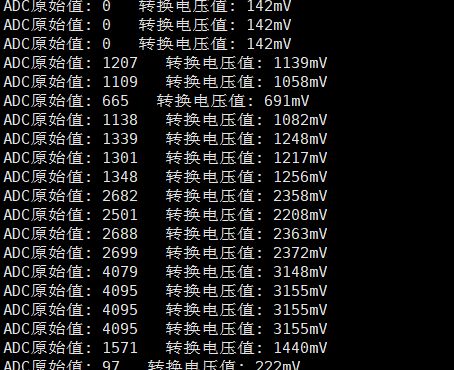
Qt+ESP32+SQLite 智能大棚
环境简介 硬件环境 ESP32、光照传感器、温湿度传感器、继电器、蜂鸣器 基本工作流程 上位机先运行,下位机启动后尝试连接上位机连接成功后定时上报传感器数据到上位机,上位机将信息进行处理展示判断下位机传感器数据,如果超过设置的阈值&a…...

Android Viewpager2 remove fragmen不生效解决方案
一、介绍 在如今的开发过程只,内容变化已多单一的fragment,变成连续的,特别是以短视频或者直播为主的场景很多。从早起的Viewpage只能横向滑动,到如今的viewpage2可以支持横向或者竖向滑动。由于viewpage2的adapter在设计时支持缓…...

Xshell远程连接Kali(默认 | 私钥)Note版
前言:xshell远程连接,私钥连接和常规默认连接 任务一 开启ssh服务 service ssh status //查看ssh服务状态 service ssh start //开启ssh服务 update-rc.d ssh enable //开启自启动ssh服务 任务二 修改配置文件 vi /etc/ssh/ssh_config //第一…...

《Playwright:微软的自动化测试工具详解》
Playwright 简介:声明内容来自网络,将内容拼接整理出来的文档 Playwright 是微软开发的自动化测试工具,支持 Chrome、Firefox、Safari 等主流浏览器,提供多语言 API(Python、JavaScript、Java、.NET)。它的特点包括&a…...
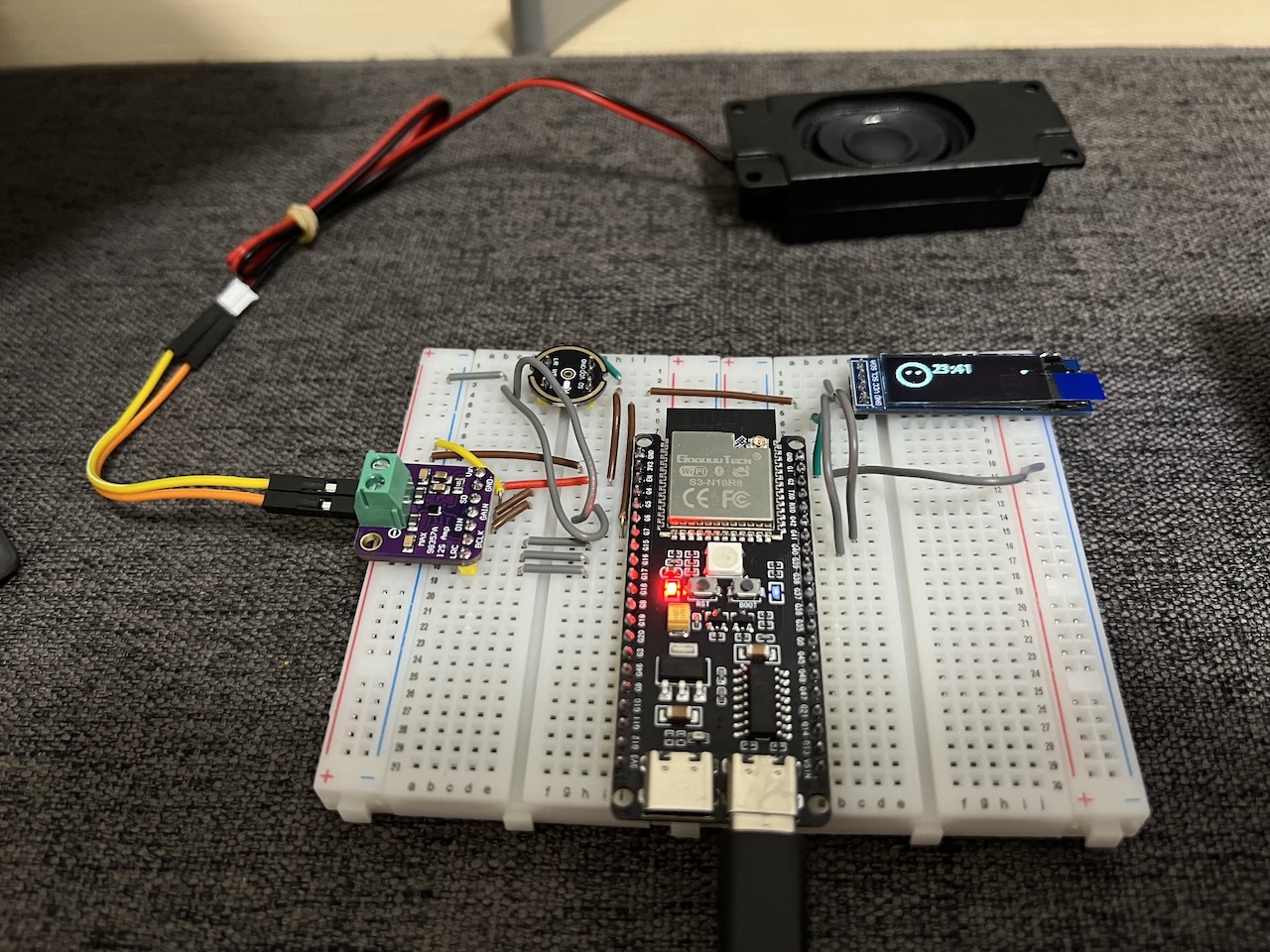
DIY|Mac 搭建 ESP-IDF 开发环境及编译小智 AI
前一阵子在百度 AI 开发者大会上,看到基于小智 AI DIY 玩具的演示,感觉有点意思,想着自己也来试试。 如果只是想烧录现成的固件,乐鑫官方除了提供了 Windows 版本的 Flash 下载工具 之外,还提供了基于网页版的 ESP LA…...

解决本地部署 SmolVLM2 大语言模型运行 flash-attn 报错
出现的问题 安装 flash-attn 会一直卡在 build 那一步或者运行报错 解决办法 是因为你安装的 flash-attn 版本没有对应上,所以报错,到 https://github.com/Dao-AILab/flash-attention/releases 下载对应版本,cu、torch、cp 的版本一定要对…...
)
相机Camera日志分析之三十一:高通Camx HAL十种流程基础分析关键字汇总(后续持续更新中)
【关注我,后续持续新增专题博文,谢谢!!!】 上一篇我们讲了:有对最普通的场景进行各个日志注释讲解,但相机场景太多,日志差异也巨大。后面将展示各种场景下的日志。 通过notepad++打开场景下的日志,通过下列分类关键字搜索,即可清晰的分析不同场景的相机运行流程差异…...
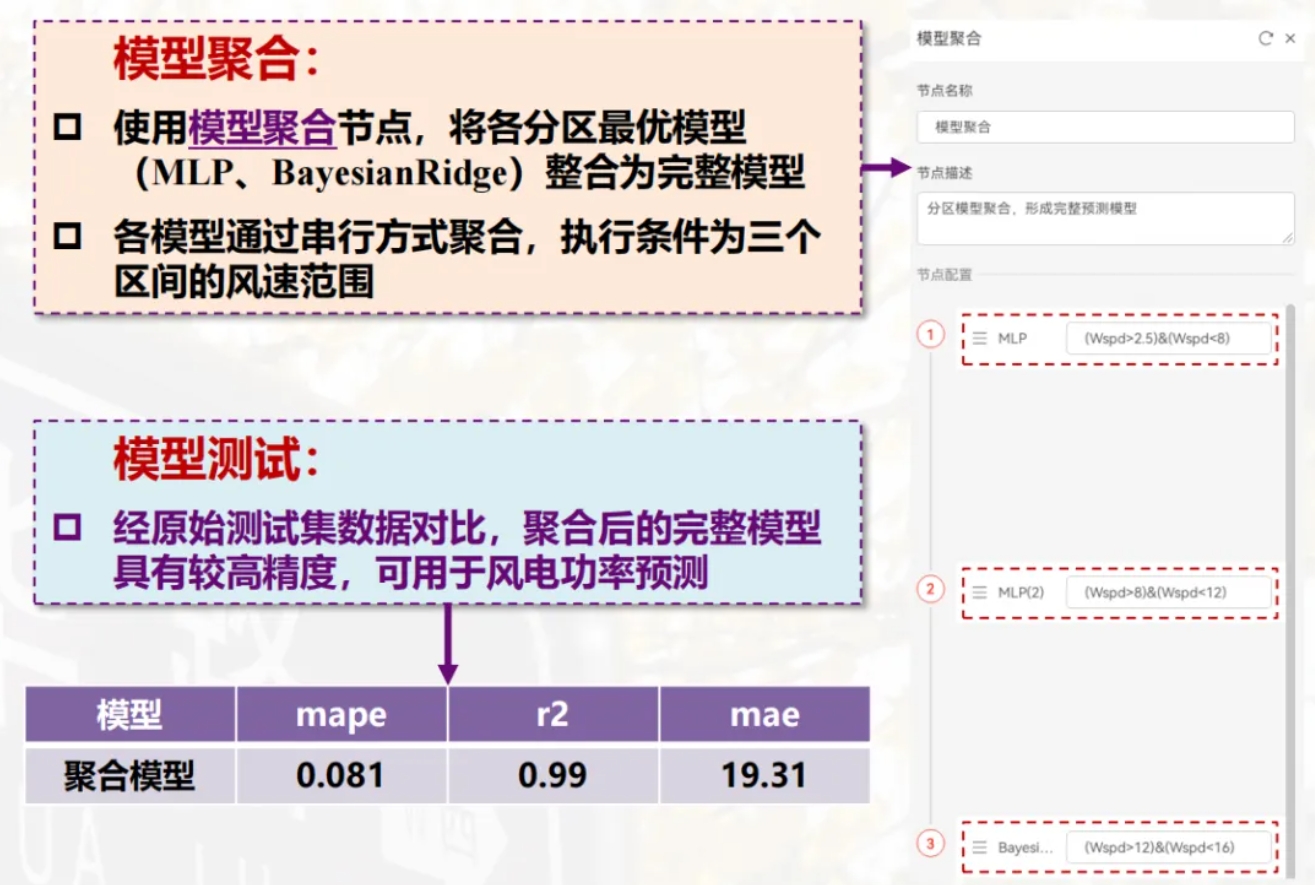
用机器学习破解新能源领域的“弃风”难题
音乐发烧友深有体会,玩音乐的本质就是玩电网。火电声音偏暖,水电偏冷,风电偏空旷。至于太阳能发的电,则略显朦胧和单薄。 不知你是否有感觉,近两年家里的音响声音越来越冷,听起来越来越单薄? —…...
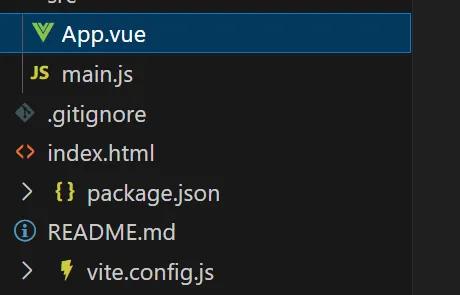
springboot整合VUE之在线教育管理系统简介
可以学习到的技能 学会常用技术栈的使用 独立开发项目 学会前端的开发流程 学会后端的开发流程 学会数据库的设计 学会前后端接口调用方式 学会多模块之间的关联 学会数据的处理 适用人群 在校学生,小白用户,想学习知识的 有点基础,想要通过项…...

A2A JS SDK 完整教程:快速入门指南
目录 什么是 A2A JS SDK?A2A JS 安装与设置A2A JS 核心概念创建你的第一个 A2A JS 代理A2A JS 服务端开发A2A JS 客户端使用A2A JS 高级特性A2A JS 最佳实践A2A JS 故障排除 什么是 A2A JS SDK? A2A JS SDK 是一个专为 JavaScript/TypeScript 开发者设计的强大库ÿ…...
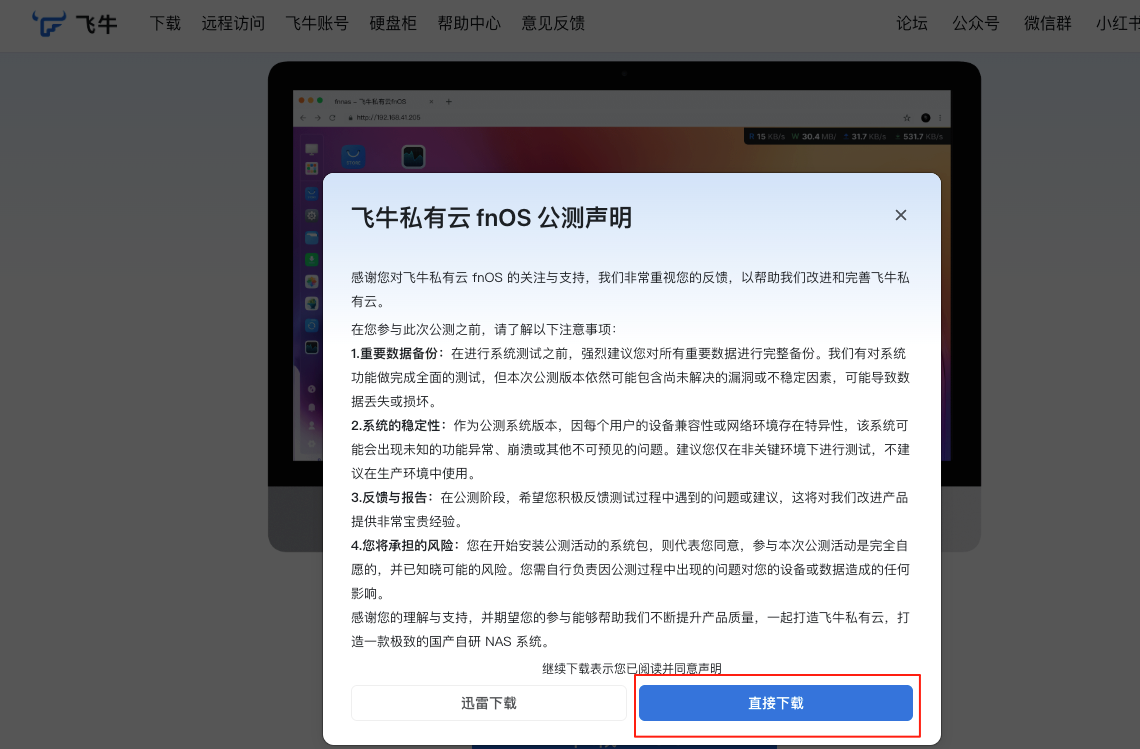
群晖NAS如何在虚拟机创建飞牛NAS
套件中心下载安装Virtual Machine Manager 创建虚拟机 配置虚拟机 飞牛官网下载 https://iso.liveupdate.fnnas.com/x86_64/trim/fnos-0.9.2-863.iso 群晖NAS如何在虚拟机创建飞牛NAS - 个人信息分享...
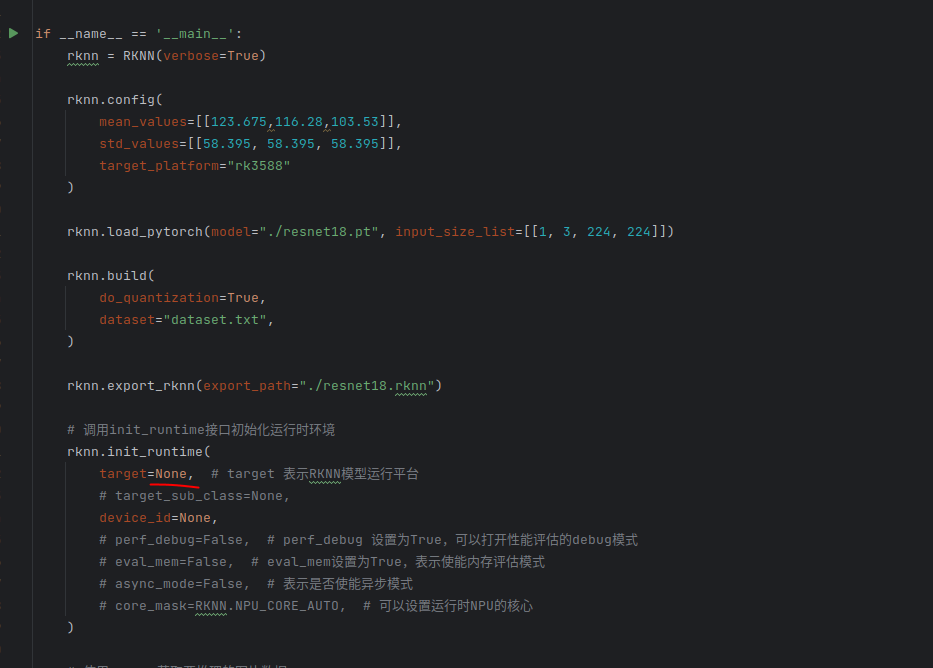
rknn toolkit2搭建和推理
安装Miniconda Miniconda - Anaconda Miniconda 选择一个 新的 版本 ,不用和RKNN的python版本保持一致 使用 ./xxx.sh进行安装 下面配置一下载源 # 清华大学源(最常用) conda config --add channels https://mirrors.tuna.tsinghua.edu.cn…...
